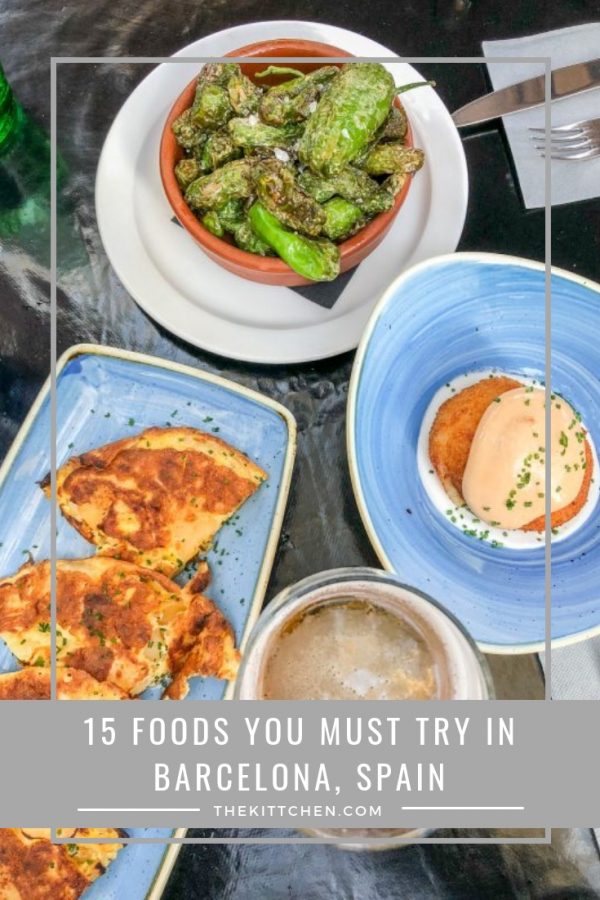These are the 15 Foods to Try in Barcelona, they include local cuisine and iconic Spanish specialties…
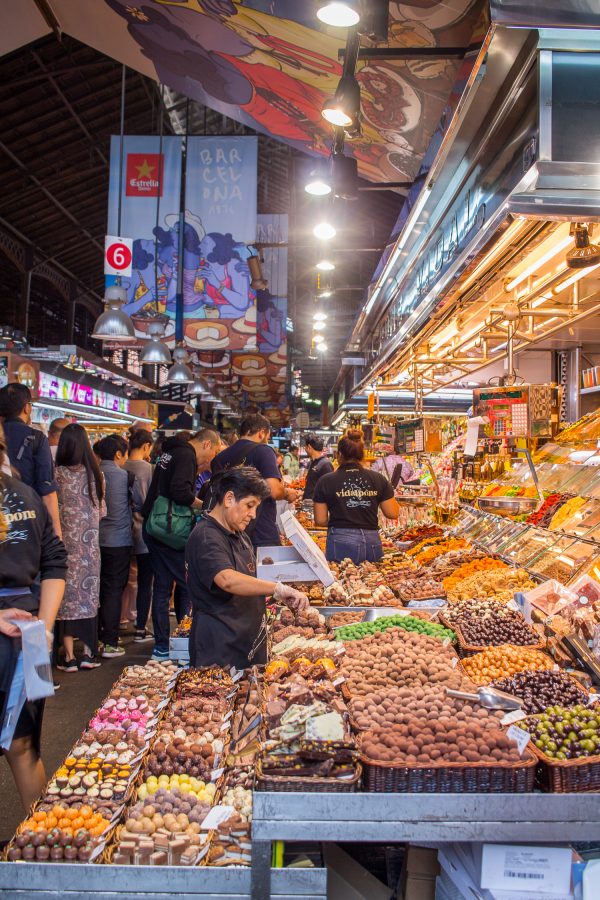
This post was sponsored by Moon Travel Guides. Thank you for supporting the brands that make The Kittchen possible.
“I pretty much just plan on us eating all day with very minimal breaks.” – Master of None
Barcelona is a city where eating all day is easy. The city streets are lined with large restaurant terraces and cafes. And their typical small plate style of eating is perfect for grazing all day. Many of Barcelona’s restaurants have nearly identical menus of pintxos and tapas. This gives visitors plenty of opportunities to try Spanish cuisine as well as dishes that are unique to Barcelona.
Before we get started, let me explain the difference between a pintxo and a tapa. Pintxos are a small bite of food, it is a 2 bite snack and they are usually sold individually. So if you order croquettas or bombas you might need to tell your server exactly how many you want. Tapas are portions intended for sharing. So if you find croquettas or bombas on a tapas menu, it should indicate that 3-4 are included in each portion.
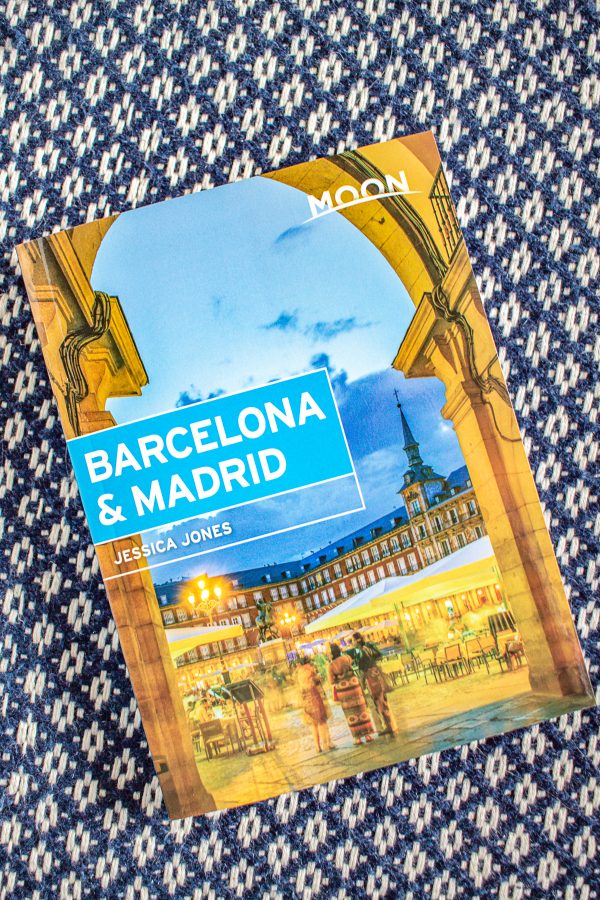
Recently I have gotten so many dms from readers and Instagram followers who are traveling to Spain! If you are looking for things to do beyond eating in Barcelona, I recommend ordering a copy of the Moon Barcelona and Madrid travel guide. I love this guidebook because it has sections for suggested day trips from Barcelona and Madrid, plus details on annual festivals and events, dozens of restaurant recommendations, and information about local food and wine! It is available wherever books are sold, including Amazon and Barnes and Noble.
Now on to some essential foods to try in Barcelona:
Bombas
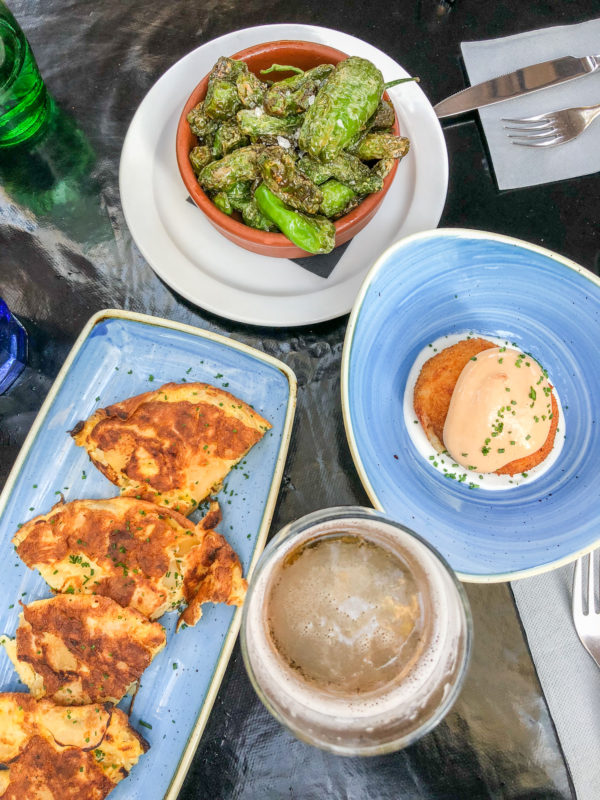
A bomba is similar to croquettas, and is made of meat and mashed potatoes that are formed in to ball, covered in breadcrumbs and fried. They can be small two bite snacks or larger tennis ball sized bombas (like this one) that are meant for sharing. It is served with a pair of aoilis, one on the bottom and another on the top.
Blistered Peppers
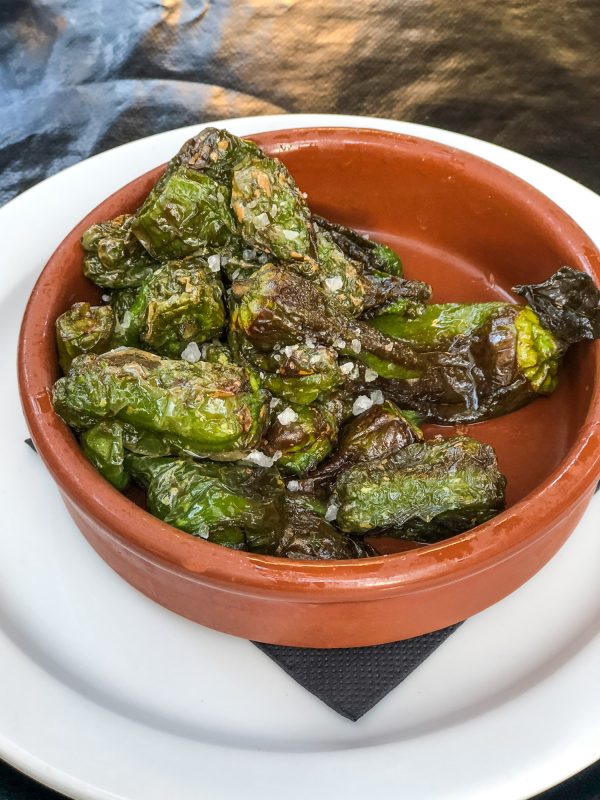
In Barcelona they tend to use Padron Peppers which are very similar to shishito peppers (again, about 1 in 10 is spicy). They are grilled until they are soft and blistered and served with a bit of sea salt on top and perhaps an aioli.
Spanish Omelet
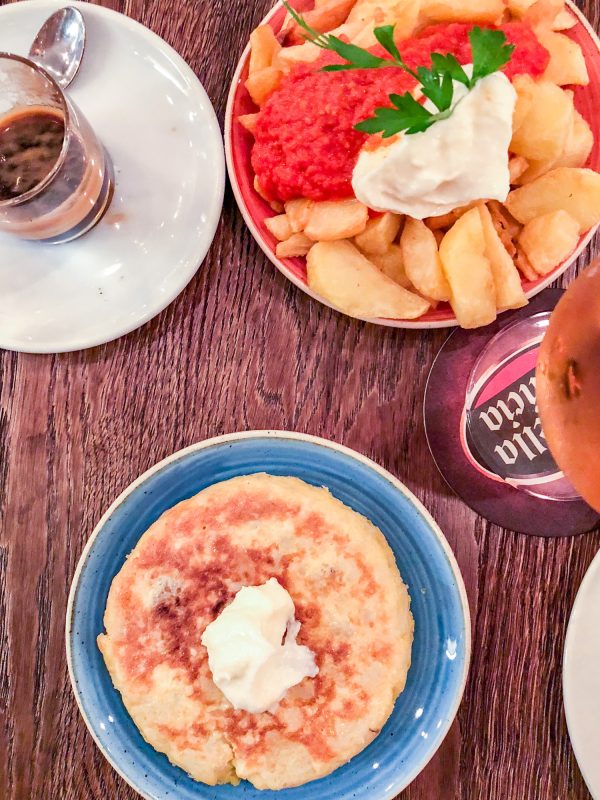
Don’t mistake this omelet for a breakfast food, it is eaten all day long. A Spanish Omelet can be small and individually sized or big and served in slices. It is filled with onion and chunks of potato and often is served with an aioli. If you want to try making it yourself, you can find my recipe here.
Manchego Cheese
Have I mentioned my love of cheese before? The other day Charles and I were listing our favorite cheeses (married life is exciting guys!) and Charles said that manchego is his second favorite cheese. Manchego is a hard aged sheep’s milk cheese that is salty, earthy, and nutty. It is made in the La Mancha region of Spain, and can be found throughout the country. It’s great on a charcuterie board with some Iberico Ham.
Pa amb tomàquet
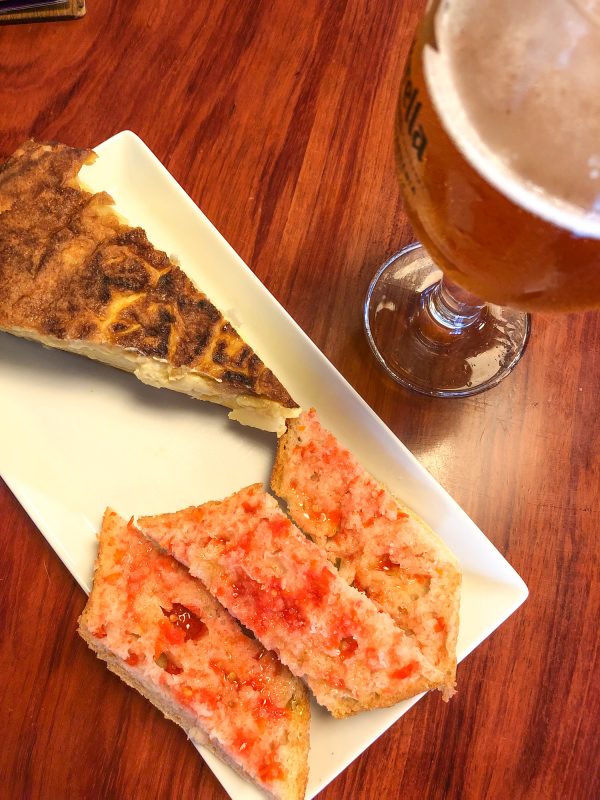
This is comprised of sliced bread rubbed with tomato and olive oil and sprinkled with salt. It is hugely popular in Barcelona, if you don’t order it, your server will ask you specifically if you want it. It is slightly different at each restaurant, sometimes the bread is warm and grilled, and sometimes there are more tomato chunks.
Croquettas

Spanish Croquettas are long and oval in shape and filled with cheese and meat. Usually the meat inside is chicken or iberico ham.
Calamari and Squid
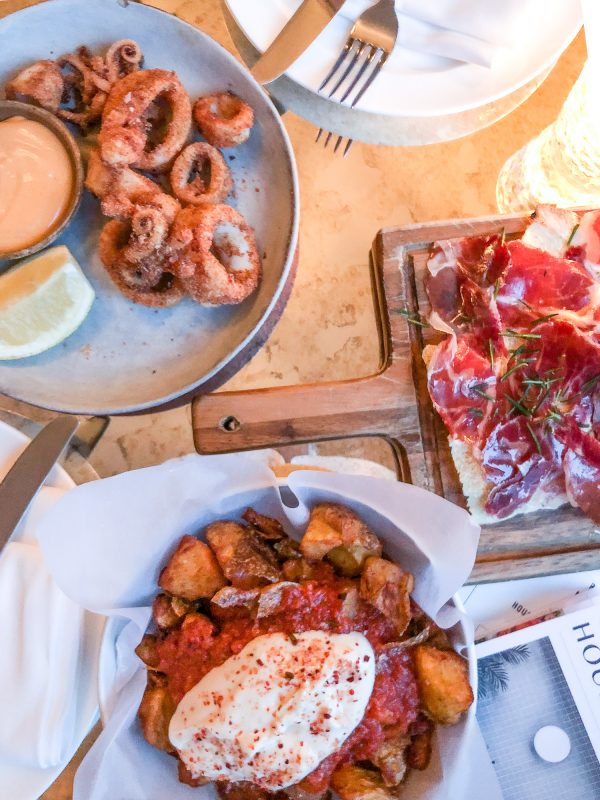
Fresh seafood is a specialty in Barcelona, and my husband especially loves the calamari and squid which are served grilled or fried.
Iberico Ham
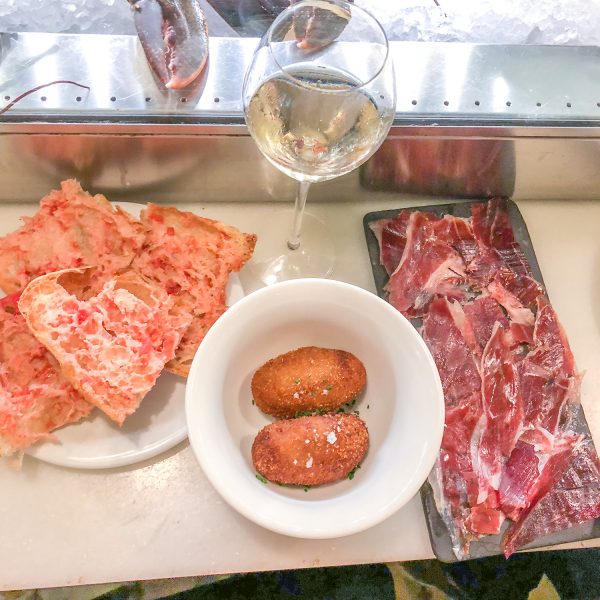
This is Spanish answer to Italy’s prosciutto. Iberico Ham is usually sliced a bit thicker than prosciutto, so it is a meatier and less delicate. You can get it on its own, and it is an ingredient in any traditional Spanish dishes.
Bocadillos
Spanish sandwiches are bocadillos and they are made on long baguettes that are simultaneously crusty and soft. Our favorite spot for bocadillos was Bo de B, where you chose a meat and then the sandwich was topped with a combination of four sauces and toppings including olives, lentils, lettuce, cucumber, tomato, and corn.
Patatas Bravas
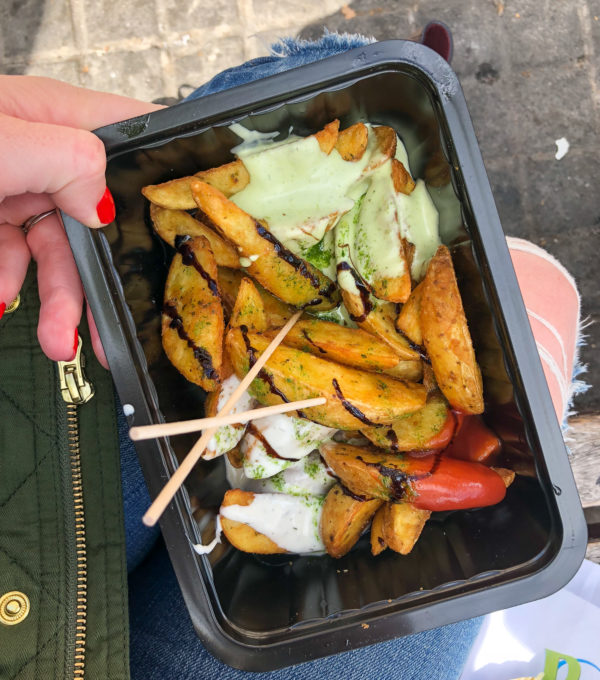
I am not embarrassed to say that I ate patatas bravas every day when I was in Spain. These crispy fried potato wedges with spicy sauce and creamy aioli are my favorite Spanish food. The best bravas that we found were at Bo de B where like the bocadillos, the patatas bravas were topped with four magical sauces. Yes, I joked about stealing the sauces and bringing them home with me.
Paella
Paella is probably the most well known Spanish cuisine. It is from the Valencia region of Spain and the internet seems to be hotly debating the origin of the meal. My high school Spanish teacher said paella was first made for a queen to show off regional seafood and the word “paella” is a contraction of the words para (for) ella (her), referring to the fact it was made for the queen. Regardless of the history, paella is served at many restaurants in Barcelona and there are many different preparations. Paella is a dish prepared in a large shallow pan that consists of rice, vegetables, paprika, saffron. Many paellas have a mix of seafood, others have meat, and some are vegetarian.
Gazpacho
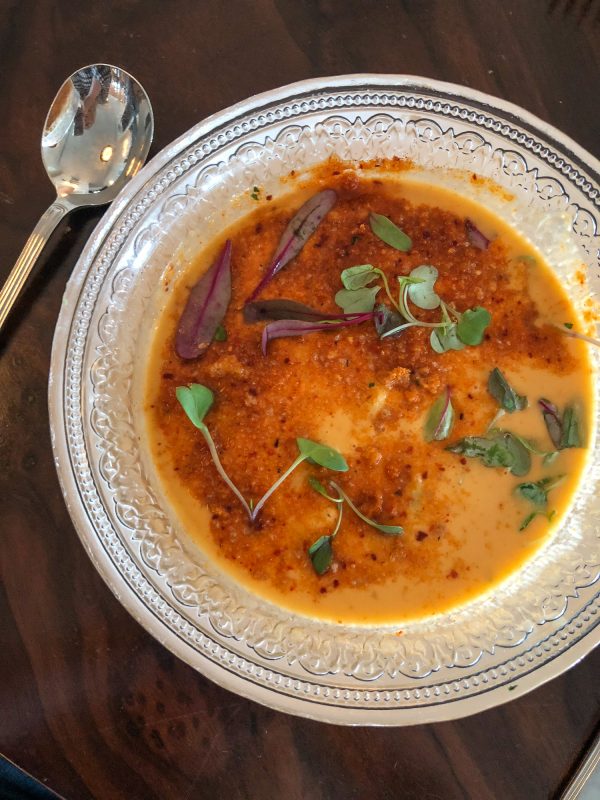
It got hot on Barcelona even in October and sipping this chilled tomato soup was a great way to cool down. Sometimes the soup had toppings on the side like croutons, red pepper, avocado, and onion, but often it is just served on its own or with a side of Pa amb tomàquet.
Chorizo
Charles loves this spicy Spanish sausage, that is commonly eaten throughout Spain. It can be served as a sausage, sliced like salami, or as an ingredient in a meal.
Sangria
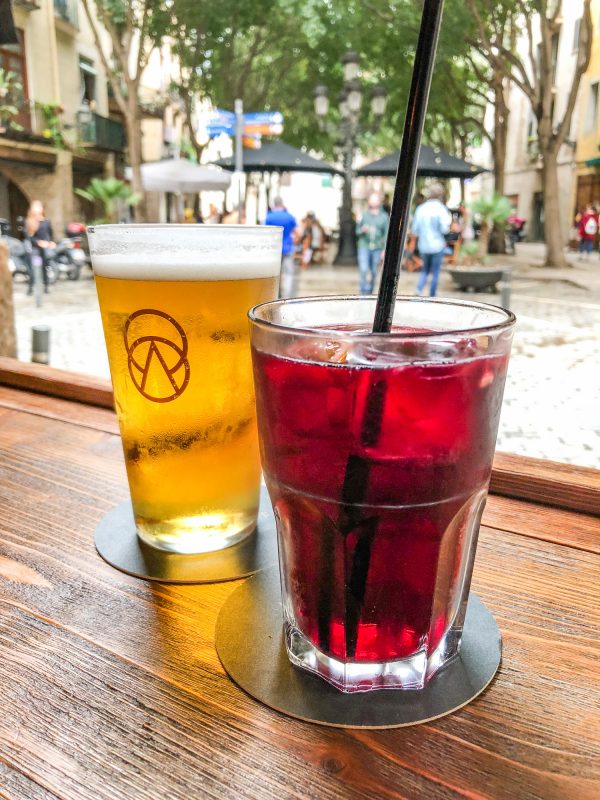
Is there anything better than an icy cold glass of sangria on a hot sunny day? Sangria is one of those things that everyone makes a little differently, and some bars offer half a dozen varieties of sangria. The best sangria I tried was at Santagustino.
Cava
This Spanish sparkling wine has a tendency to be a bit on the sweeter side, but you can find Brut Cava which is a bit drier and more similar to champagne.
Read More About Barcelona
Save and share this list of Barcelona Foods on Pinterest:
